After nearly a week in Vilcabamba Ecuador catching up with friends and planning our route through Peru, we head to the remote border crossing at La Balsa. La Balsa sits on one side of the Río Blanco, connecting Ecuador and Peru via a bridge (a raft once ferried passengers across, hence the name La Balsa). The crossing was established after Ecuador and Peru settled their border differences in 1999, ending the longest-running international armed conflict in the Western Hemisphere. It is the furthest inland crossing and by far the least frequented.
We set out from Vilcabamba at 11:00am hoping to camp before the crossing. The road turned immediately to dirt and we grinned in anticipation of the off-road journey ahead. As the narrow road climbed, the mountainous views became increasingly picturesque. Often rocky and rough, our Bronco camper decided to ditch a hitch cover and light cover in protest. We drove to South America to seek out the experience unfolding before us.
We pass though Zumba, a dirt road mecca, and locate camp for the night. Before settling down for a bacon and egg dinner, we relax next to the rocky stream as the camper breathes a sigh of relief. We hit the hay early eager for the morning to bring even more majestic scenery and a new country. A riverside bush camp this evening is a perfect end to our exploits in Ecuador.
At this point in the trip breaking up camp is second nature, replacing our previous morning routine of excessive snooze button hitting and a one minute shower before bolting out of the door to catch the 44. This morning, after coffee at sunrise, we break up camp, brush our teeth, and wind our way toward Peru.
We arrive at the border and in 10 minutes we are checked out of Ecuador. We interrupt a card game to change our remaining dollars (the official currency of Ecuador since 2000) into Peruvian Soles, before crossing the modest international bridge. The shirtless Ecuadorian shopkeeper gave us a favorable rate at first offer – no haggling necessary.
Entering Peru was similarly easy. A few questions here, a copy there and PanAmNotes is officially checked into country number eleven.
Our first impressions of Peru are positive, as they often are when we find ourselves in the remote countryside. It is coffee harvest season and the farmers are drying the beans on any flat surface they can find. This includes the road. The sun is out, the earth is a vibrant green; children are again pointing and waving as their parents try to make sense of a rolling house with California plates.
After a few wrong turns remedied by helpful locals, we camp in San Ignacio for the night. Total cost for camping: s/3.00 ($1). As luck would have it, our friends George and Andrea arrive at the same campsite with our missing hitch cover, inexplicably found along the dirt road. Later that night we toast our new Peruvian cervezas together over Comida Chifa (Chinese food).
We’ve been in Peru for less than 12 hours and can already tell we are going to love it here.
Tips for those of you looking to use the La Balsa Border crossing:
- Their is a gas station in Zumba Ecuador, but like most of Southern Ecuador it is occasionally (if not often) dry. Further, near the border, Ecuador rations their fuel to prevent foreign nationals crossing the border and filling up on $1.50/gal gasoline. We were not restricted with how much we could purchase, but have been warned that others have. Top off in Loja before Vilcabamba.
- Vilcabamba to Zumba river camp took us 6 hours, an additional 1.5 hours to La Balsa
- Zumba river camp: S04 53.59 W79 07.65
- To exit Ecuador: get your passport stamped at immigration and hand over your vehicle permit to Aduana who will check your VIN and license number. Cost: $0
- The Peruvian side closes for lunch which is typically 12:00 – 3:00pm, but can be as late as 4:00pm
- To enter Peru: get your passport stamped in the brown building toward your right as you cross the bridge. Cost: $0 Whether or not you’ll need copies of anything to get a vehicle permit depends on the agent. There is a copy place next door.
- You’ll need auto insurance to drive in Peru. They do not sell it at the borders. The police in Peru seem friendly, but well aware of this fact.
- La Balsa to San Ignacio took us 1.5 hours, San Ignacio to Jaen took 2.5 hours.
- Camp/secure parking in San Ignacio at Hostal Faical: S 05 08.711 W79 00.428
- San Ignacio is a nicer place to stay compared to Jaén
- UPDATE: In Southern Peru we’ve been pulled over for failing to run our headlights during daylight hours. While we don’t believe this to be a law, you might as well turn on your lights to avoid the stop and 30min conversation.


















































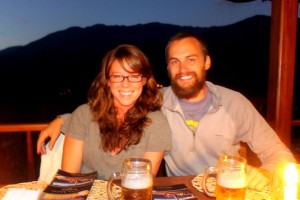
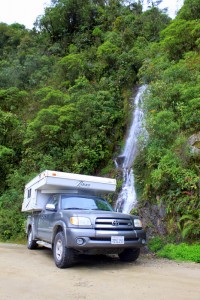
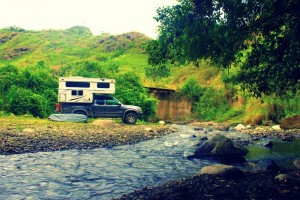
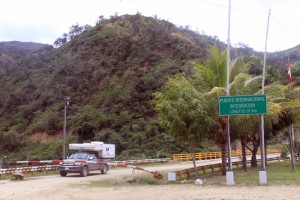
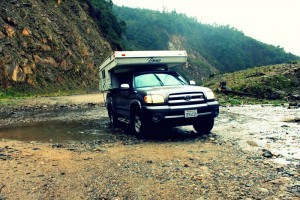
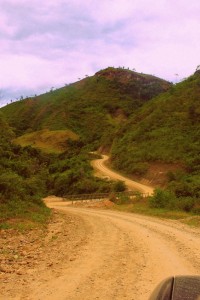



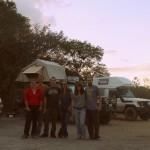
way to go off the beatin track guys! how were the roads? Would the Sprinter be ok?
Tough call. We never engaged 4WD but these are probably the worst roads yet (best scenery). Picture the road to Pavones with 1000′ drops and lots of switchbacks.